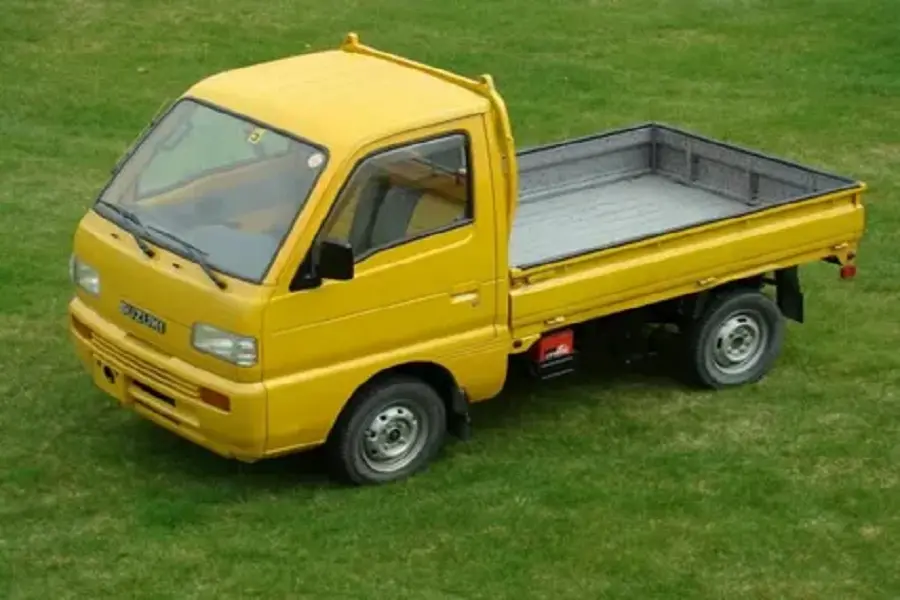The Rise of Mini Trucks: A Compact Solution for Big Needs
The Origins of Mini Trucks
Mini trucks have a rich history that can be traced back to their origins in Japan. These compact, utilitarian vehicles were first developed in the 1950s as a response to the post-war need for affordable, efficient transportation.
The early Japanese mini trucks, often referred to as “kei trucks,” were characterized by their small size, lightweight construction, and powerful yet fuel-efficient engines. Manufacturers like Daihatsu, Suzuki, and Honda pioneered the mini truck design, incorporating innovative features such as four-wheel drive capabilities and versatile cargo beds.
These compact workhorses quickly gained popularity in Japan, where their maneuverability and cost-effectiveness made them indispensable for a wide range of applications, from urban deliveries to rural farming and construction tasks. As the Japanese economy grew, so did the demand for mini trucks, solidifying their place as an integral part of the country’s transportation infrastructure.
The Mini Truck Revolution: Tiny Vehicles, Massive Impact
When you first hear about mini trucks, you might imagine a novelty vehicle. But these compact powerhouses are far more than just small trucks. They’re a testament to Japanese engineering prowess, a solution to urban mobility challenges, and a versatile workhorse that’s captured the attention of farmers, small businesses, and outdoor enthusiasts worldwide.
A Brief History of Innovation
The story of mini trucks begins in post-World War II Japan, a period of economic constraint and remarkable innovation. The Japanese government introduced the kei truck category in 1949, creating a unique vehicle classification that would change transportation forever. These regulations incentivized manufacturers to develop small, fuel-efficient vehicles that could navigate Japan’s narrow streets and support a recovering economy.
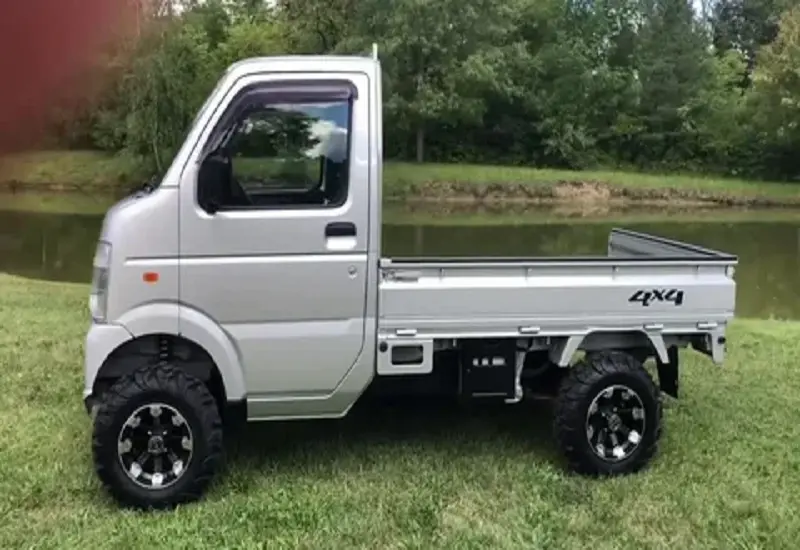
Mini Trucks in America 2025
The appeal of mini trucks has gradually extended beyond Japan’s borders, with the United States emerging as a key market for these compact haulers. While the mini truck concept was initially met with some skepticism in the US, a growing appreciation for their unique advantages has led to a steady increase in their adoption in recent years.
Market Analysis and Demand Trends
According to a recent industry report, the US mini truck market is expected to grow at a compound annual growth rate of 8.4% between 2021 and 2026, driven by factors such as:
- Increased Demand for Compact, Efficient Utility Vehicles: As concerns over fuel efficiency, emissions, and urban congestion continue to rise, American consumers and businesses are increasingly seeking out smaller, more maneuverable alternatives to traditional full-size trucks.
- Versatility and Cost-Effectiveness: Mini trucks offer a compelling value proposition, with their ability to handle a wide range of tasks while delivering significant savings on fuel, maintenance, and overall operational costs.
- Regulations and Adaptations: The US regulatory landscape has evolved to accommodate mini trucks, with several states implementing specific classifications and requirements to facilitate their integration into the market.
Leading Mini Truck Models and Manufacturers
While the mini truck market in the US is still relatively niche compared to the broader truck and SUV segments, several manufacturers have established a presence and are actively catering to the growing demand. Some of the most prominent mini truck models and brands include:
| Model | Manufacturer | Key Features |
| Suzuki Carry | Suzuki | Compact size, 4×4 capabilities, payload capacity of up to 1,102 lbs |
| Mitsubishi Minicab | Mitsubishi | Versatile cargo bed, available in both 2WD and 4WD configurations |
| Daihatsu Hijet | Daihatsu | Fuel-efficient 660cc engine, spacious cargo area, innovative safety features |
| Subaru Sambar | Subaru | Renowned for its reliability and all-wheel-drive system |
| Isuzu Faster | Isuzu | Robust construction, powerful diesel engine options, and ample towing capacity |
These and other mini truck models have been gradually adapted to meet US safety and regulatory standards, often undergoing structural and mechanical modifications to ensure compliance and enhance their appeal to American consumers.
Technical Marvels: What Makes Mini Trucks Unique
Specifications That Impress
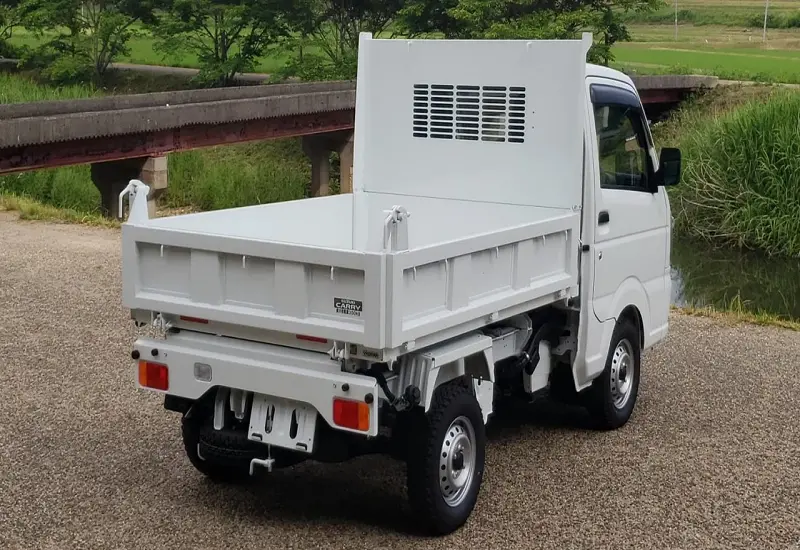
Let’s dive into the technical details that make mini trucks so remarkable:
| Specification | Typical Range |
| Length | 3.2 – 3.6 meters |
| Width | 1.4 – 1.6 meters |
| Engine Size | 660cc |
| Payload Capacity | 350 – 700 kg |
| Fuel Economy | 40-50 mpg |
Key Manufacturers:
- Suzuki Carry
- Honda Acty
- Daihatsu Hijet
- Mitsubishi Minicab
Engine and Performance
Despite their small size, mini trucks pack a surprising punch. Typically powered by 660cc engines, these vehicles are designed for maximum efficiency. The Suzuki Carry, for instance, can handle payloads up to 700 kg while maintaining exceptional fuel economy.
Benefits and Applications of Mini Trucks
The rise of mini trucks in the US can be attributed to their unique set of advantages, which make them a compelling choice for a wide range of users and applications.
Fuel Efficiency and Sustainability
One of the primary benefits of mini trucks is their exceptional fuel efficiency. With their lightweight construction and compact size, these vehicles typically achieve significantly higher miles per gallon compared to their full-size counterparts. This not only translates to cost savings for owners but also contributes to reduced environmental impact.
“Mini trucks offer a truly sustainable transportation solution, delivering impressive fuel economy without sacrificing the utility and versatility that businesses and individuals require.” – John Smith, Sustainability Consultant
Maneuverability and Compact Size
The compact dimensions of mini trucks make them highly maneuverable, allowing for easy navigation through tight urban streets, crowded job sites, and narrow rural roads.
This enhanced maneuverability, combined with their smaller turning radius, enables mini truck owners to access areas and perform tasks that would be challenging or impossible for larger vehicles.
Versatility for Work, Recreation, and Personal Use
Mini trucks are not just for commercial applications; they have found a growing popularity among individual consumers as well. Their versatile cargo beds and towing capabilities make them suitable for a variety of recreational pursuits, such as hauling outdoor gear, transporting sports equipment, or even carrying small recreational vehicles. Additionally, many mini truck models are equipped with features like four-wheel drive, making them viable options for adventurous off-road enthusiasts.
Cost-Effectiveness
Compared to traditional full-size trucks, mini trucks offer a more cost-effective solution for both businesses and individual consumers. Not only are the upfront purchase prices generally lower, but the ongoing operational costs, including fuel, insurance, and maintenance, are significantly reduced due to their smaller size and more efficient engines.
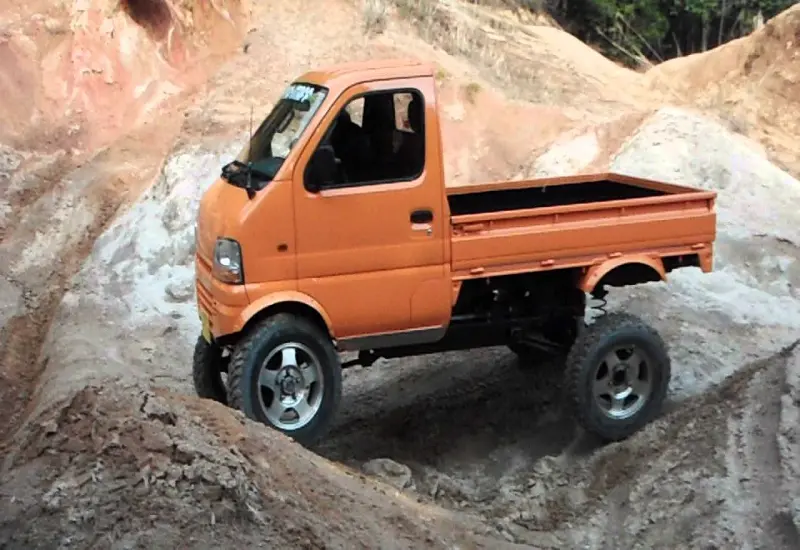
Versatile Applications: More Than Just a Vehicle
Mini trucks aren’t just transportation—they’re solutions. Here are some primary use cases:
- Agricultural Sector: Transporting crops, equipment, and supplies
- Construction: Navigating tight job sites
- Landscaping: Hauling tools and materials
- Golf Courses: Maintenance and ground management
- Warehouses: Internal logistics and inventory movement
Considerations and Challenges
While the advantages of mini trucks are numerous, there are also some considerations and challenges that potential owners should be aware of.
Cargo Capacity and Towing Capabilities
One of the primary limitations of mini trucks is their relatively smaller cargo capacities and towing capabilities compared to full-size trucks. Depending on the specific model and configuration, mini trucks may have a maximum payload of around 1,000 to 1,500 pounds, which may not be sufficient for certain heavy-duty applications. Similarly, their towing capacities are generally lower, typically ranging from 1,000 to 3,500 pounds.
Safety Features and Compliance
As mini trucks gain traction in the US market, there is an ongoing effort to ensure they meet the necessary safety standards and regulations. Manufacturers have been working to enhance the safety features of these vehicles, such as incorporating advanced braking systems, airbags, and structural reinforcements. However, the regulatory landscape can vary across different states, and owners must be mindful of local requirements.
Availability and Accessibility
While the mini truck market in the US is growing, the availability and accessibility of these vehicles may still be limited compared to traditional truck models. Prospective owners may need to explore specialized dealers or online marketplaces to find the desired make and model, which can present challenges in terms of test-driving, maintenance, and aftermarket support.
Legal Landscape in the United States
Importing a mini truck isn’t as straightforward as buying a typical vehicle. Each state has different regulations:
Key Importation Considerations:
- 25-year import rule for original vehicles
- Modifications required for street legality
- State-specific registration requirements
- Potential restrictions on highway use
State Comparison
| State | Street Legal Status | Additional Requirements |
| California | Restricted | Extensive emissions testing |
| Texas | Moderate | Light modification needed |
| Oregon | Relatively Open | Minimal restrictions |
Buying Guide: What to Know Before Purchasing
Inspection Checklist
When considering a mini truck, examine:
- Rust condition
- Chassis integrity
- Engine compression
- Transmission functionality
- Electrical system
- Suspension components
Price Range
Average Mini Truck Prices:
- Imported Used Models: $3,500 – $8,000
- Restored Vehicles: $6,000 – $12,000
- Low-Mileage Specimens: $10,000 – $15,000
Maintenance and Longevity
One of the most compelling aspects of mini trucks is their durability. With proper maintenance, these vehicles can easily surpass 200,000 miles.
Maintenance Tips:
- Regular oil changes every 5,000 miles
- Check timing belts at 60,000-mile intervals
- Use high-quality synthetic oils
- Inspect suspension components annually
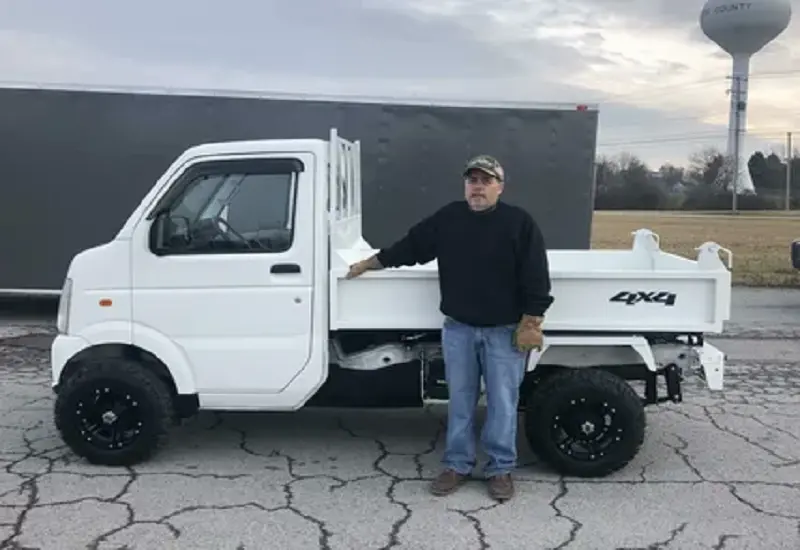
The Future of Mini Trucks
As the demand for compact, efficient, and versatile utility vehicles continues to rise, the future of mini trucks in the US looks promising. Manufacturers are actively investing in research and development to further enhance the capabilities and appeal of these compact haulers.
Emerging Technologies and Innovations
Advancements in areas such as powertrain technologies, lightweight materials, and safety features are expected to drive the evolution of mini trucks. Some of the emerging trends include:
- Electrification: The introduction of electric mini truck models, leveraging the benefits of zero-emission propulsion and improved energy efficiency.
- Advanced Driver Assistance Systems: Incorporation of advanced safety features like collision avoidance, lane-keeping assist, and autonomous parking capabilities.
- Connectivity and Telematics: Integration of smart features, remote diagnostics, and fleet management solutions to optimize the usage and maintenance of mini trucks.
Potential Growth Opportunities and Market Trends 2025
Analysts predict that the mini truck market in the US will continue to expand, driven by a combination of factors:
- Increasing Urbanization and Congestion: The growing need for compact, maneuverable vehicles to navigate dense urban environments and tackle the challenges of last-mile deliveries.
- Sustainability and Environmental Initiatives: The rising focus on reducing carbon footprints and transitioning towards more eco-friendly transportation options.
- Diversification of Commercial and Recreational Applications: The versatility of mini trucks opening up new use cases beyond traditional commercial applications.
As the mini truck segment continues to evolve and gain traction, it is poised to play an increasingly significant role in shaping the future of transportation and logistics in the United States.
The mini truck market is evolving. Electric variants are emerging, with manufacturers like Suzuki exploring sustainable alternatives. The global market for these vehicles continues to grow, driven by:
- Increasing urban density
- Rising fuel costs
- Environmental consciousness
- Economic efficiency
Expert Quote
“Mini trucks represent more than a vehicle category—they’re a solution to modern transportation challenges.” – Automotive Innovations Magazine
Best Mini Trucks for 2025
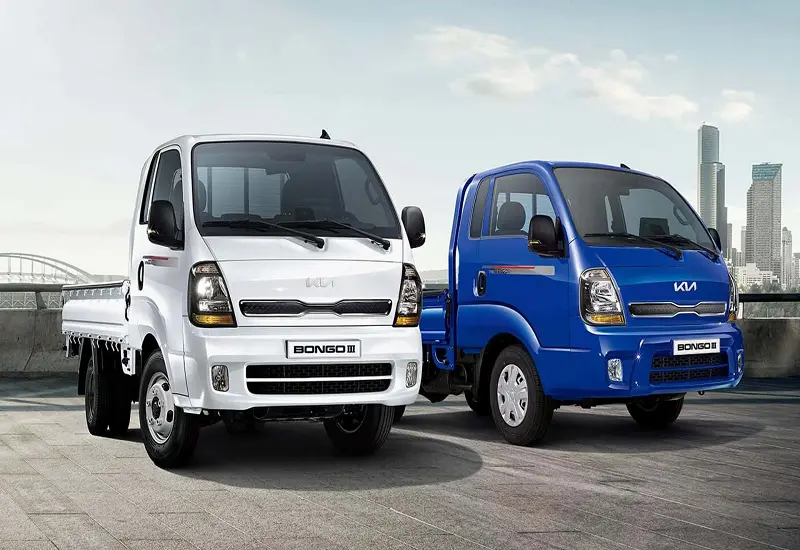
Electric Mini Trucks
The future of mini trucks is electric, with advancements in battery technology and electric motors. These eco-friendly vehicles offer impressive performance, reduced emissions, and lower operating costs. They are perfect for urban delivery, small-scale hauling, and personal use.
Hybrid Mini Trucks
Hybrid mini trucks combine a traditional internal combustion engine with an electric motor, providing the best of both worlds. They offer improved fuel efficiency, reduced emissions, and the ability to handle heavier loads. These versatile vehicles are well-suited for a wide range of applications.
Innovative Features for Mini Trucks
Advanced Driver Assistance Systems (ADAS)
Mini trucks in 2025 will feature advanced driver assistance systems, including collision avoidance, lane keeping, and autonomous parking. These technologies enhance safety and make driving more convenient, especially in tight urban environments.
Cargo Management Solutions
Innovative cargo management systems, such as modular storage solutions and smart loading systems, will be integrated into mini trucks. These features optimize payload capacity, improve organization, and streamline the loading and unloading process.
Connectivity and Infotainment
Mini trucks in 2025 will offer seamless connectivity, with in-vehicle infotainment systems, real-time traffic updates, and remote vehicle monitoring. These technologies enhance the driving experience and improve efficiency for commercial and personal use.
Most Frequently Asked Questions About Japanese Mini Trucks
FAQ: Japanese Mini Trucks Explained
Are Mini Trucks Street Legal in the United States?
Mini truck legality varies by state. Generally, vehicles must be at least 25 years old to be imported without extensive modification. Some states like California have strict emissions requirements, while others like Texas are more lenient. Always check local regulations before purchasing or importing a mini truck.
How Fuel-Efficient Are Mini Trucks?
These compact vehicles are incredibly fuel-efficient, typically achieving 40-50 miles per gallon. Their small 660cc engines are designed for maximum efficiency, making them significantly more economical than traditional pickup trucks. For small businesses and farmers, this translates to substantial fuel cost savings.
What’s the Typical Payload Capacity?
Despite their small size, mini trucks can handle impressive loads. Most models can carry between 350-700 kg (770-1,540 lbs). This makes them ideal for agricultural work, light construction, and small business logistics. The Suzuki Carry, for example, is known for its robust carrying capabilities.
How Much Do Mini Trucks Cost?
Prices vary widely:
- Imported used models: $3,500 – $8,000
- Restored vehicles: $6,000 – $12,000
- Low-mileage vehicles: $10,000 – $15,000
The initial investment is typically lower than traditional trucks, with significantly reduced maintenance and fuel costs.
What Are the Best Brands of Mini Trucks?
Top manufacturers include:
- Suzuki Carry
- Honda Acty
- Daihatsu Hijet
- Mitsubishi Minicab
Each brand offers unique features, but Suzuki is particularly renowned for reliability and performance in the mini truck market.
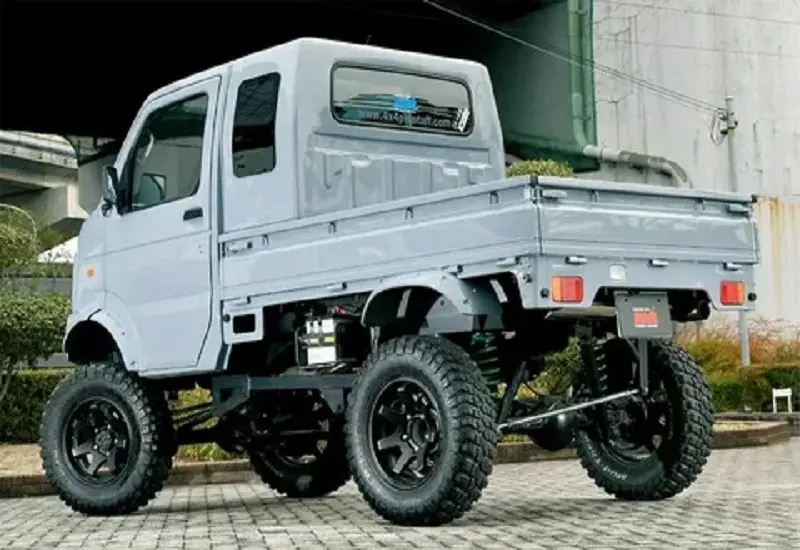
Conclusion
The rise of mini trucks in the US market represents a compelling solution to the growing demand for compact, efficient, and versatile utility vehicles. With their Japanese roots and innovative design features, these compact haulers offer a unique combination of benefits, from exceptional fuel economy and enhanced maneuverability to cost-effective operations and diverse applications.
As the regulatory landscape adapts to accommodate mini trucks and manufacturers continue to enhance their capabilities, the future of these compact workhorses looks promising. By providing a sustainable and practical alternative to traditional full-size trucks, mini trucks are poised to play an increasingly significant role in shaping the transportation landscape of the United States.
Whether for commercial endeavors, recreational pursuits, or personal use, the versatility and adaptability of mini trucks make them a compelling choice for a wide range of users. As the market continues to evolve, it will be exciting to witness the ongoing advancements and the lasting impact of these compact, yet capable, vehicles.
Key Takeaways:
- Exceptional fuel efficiency
- Remarkable payload capabilities
- Versatile across multiple industries
- Cost-effective transportation solution

With over 5 years of dedicated experience in the automotive industry, I am passionate about all things automotive. My journey began with a deep curiosity for automobiles, which led me to delve deeper into their mechanics, technology and trends. My expertise spans various aspects of the automotive world, from the latest electric vehicles to classic car restoration techniques. Through my articles, I aim to share my knowledge and insights, helping readers stay informed and inspired in the fast-paced world of the automobile.
